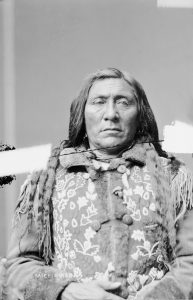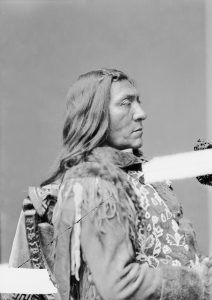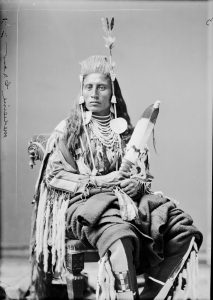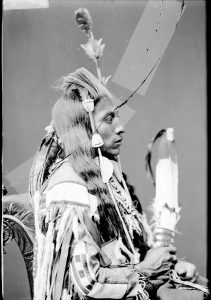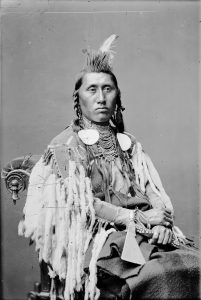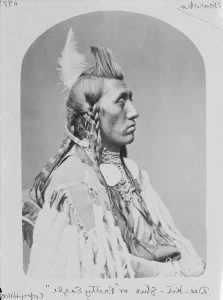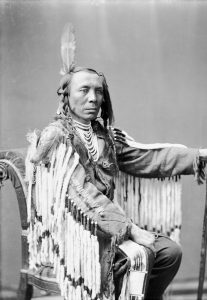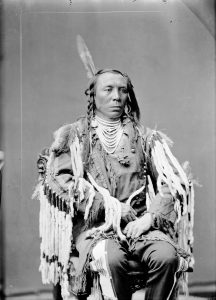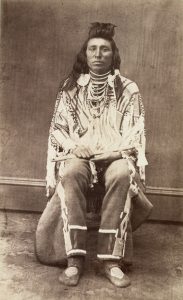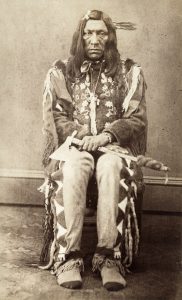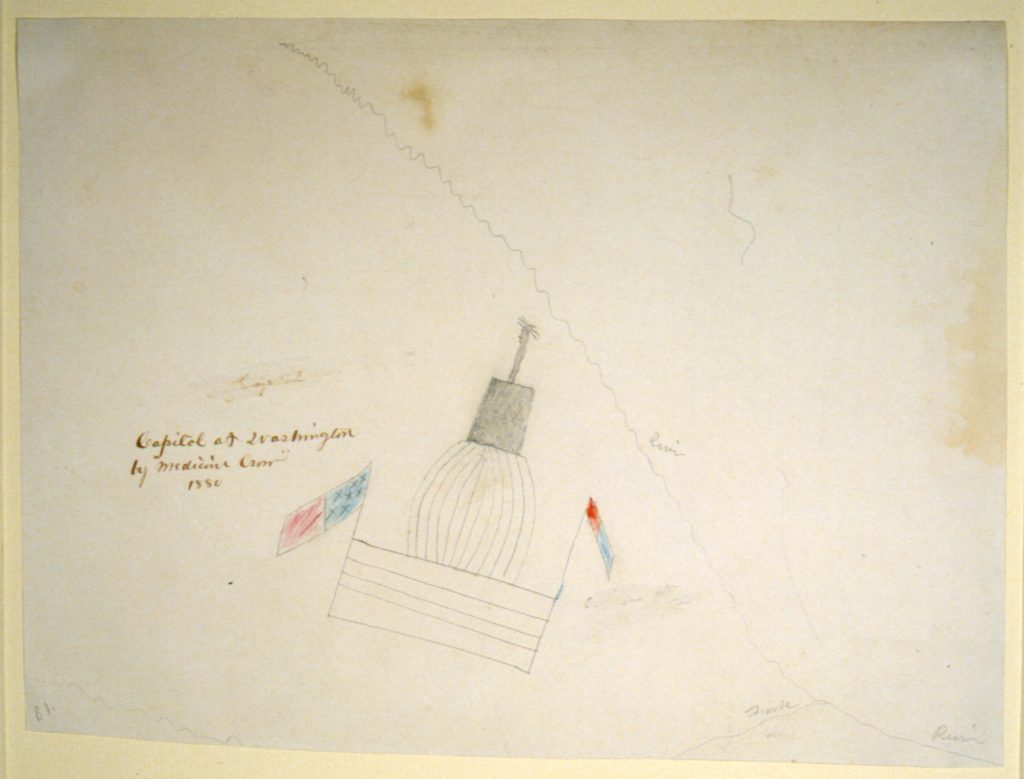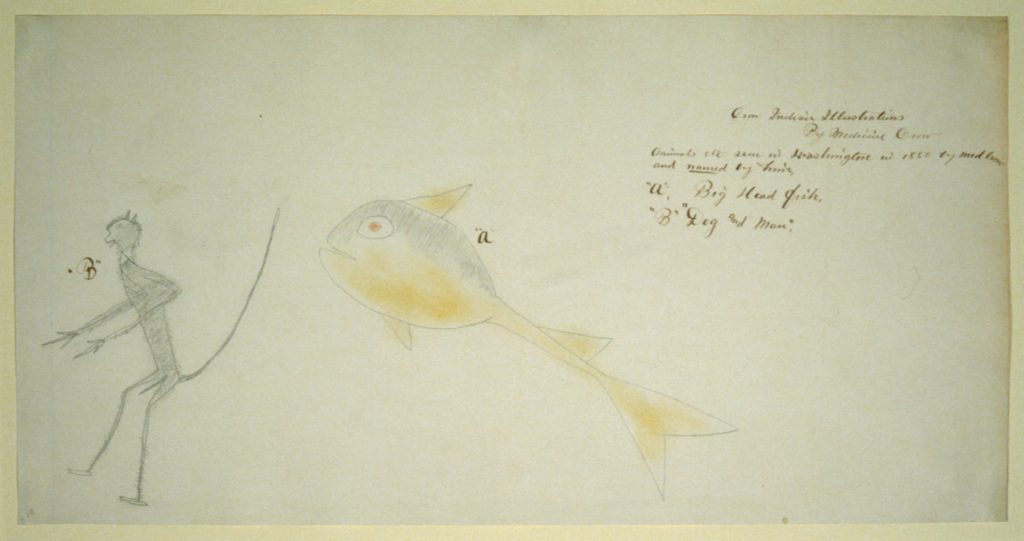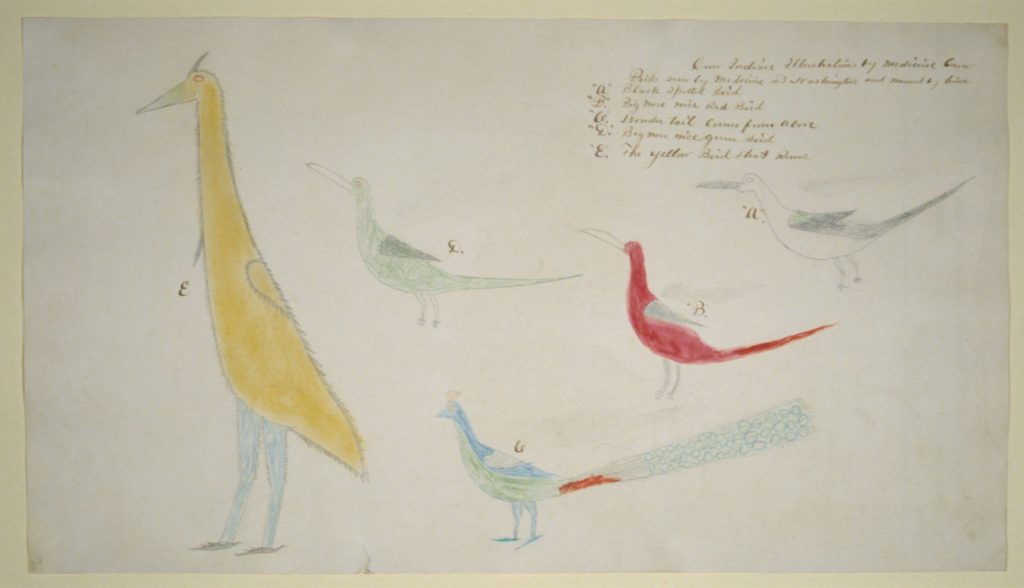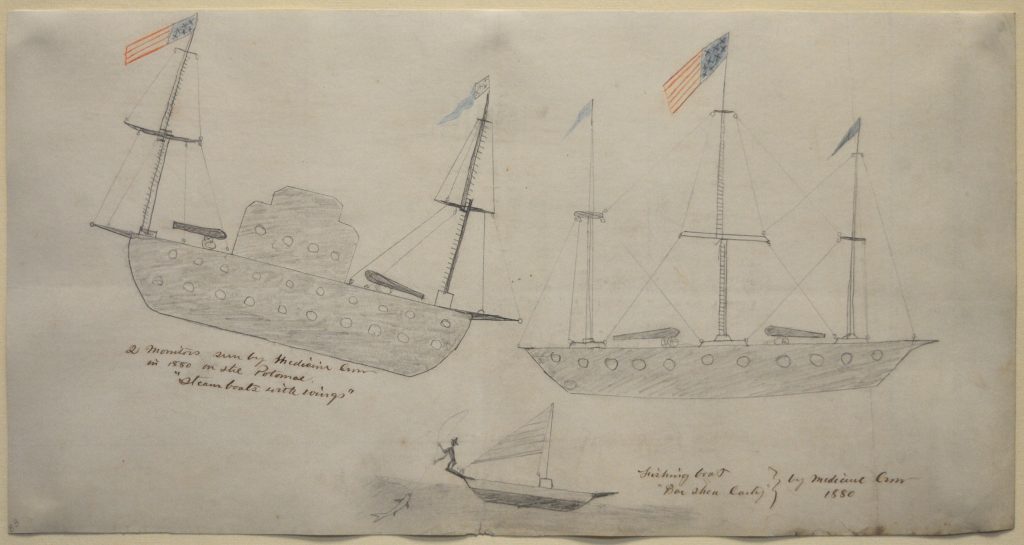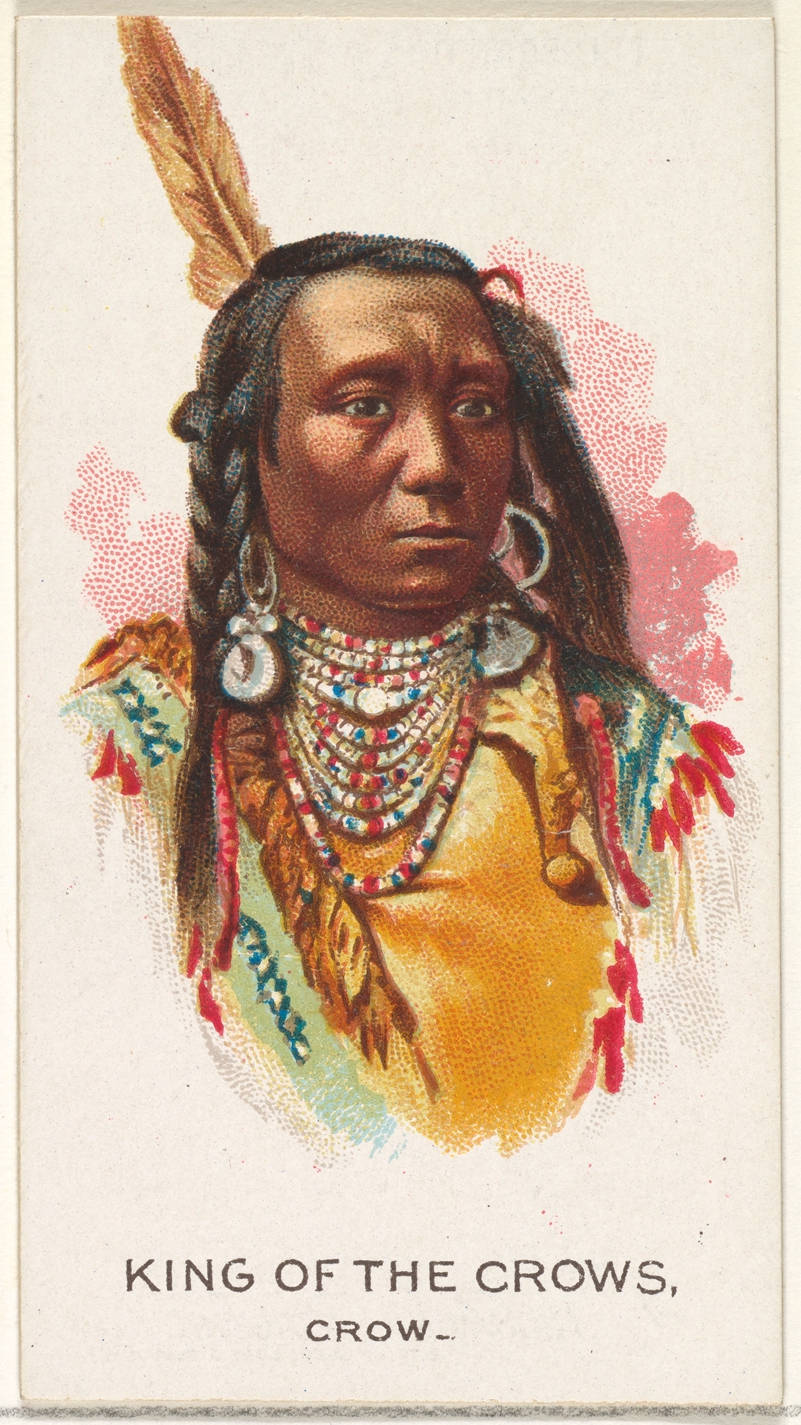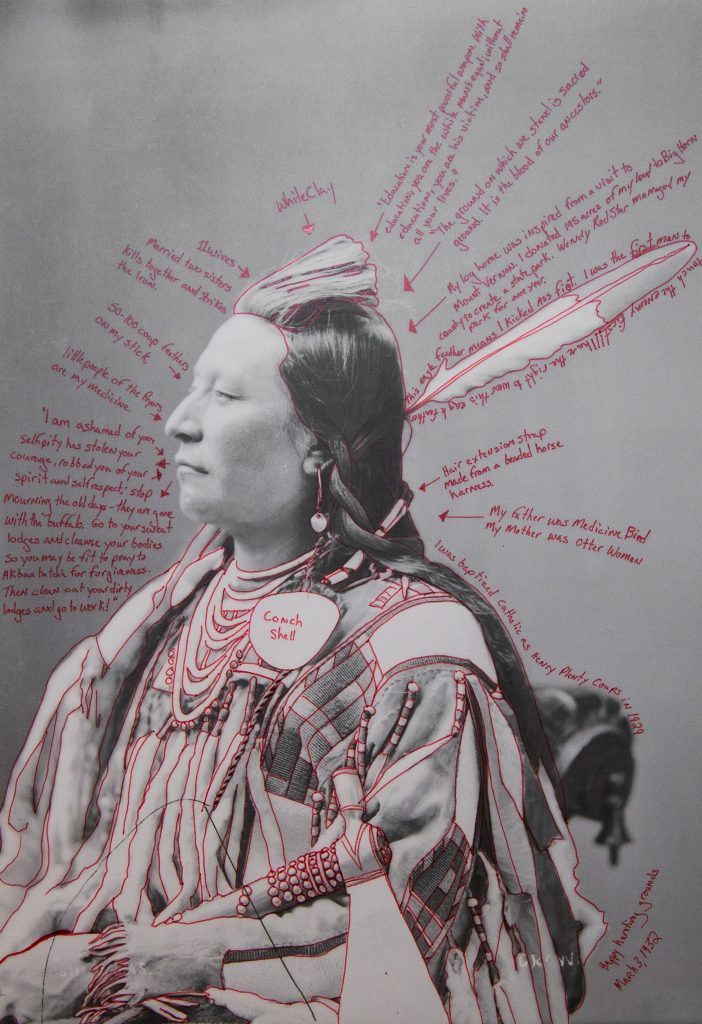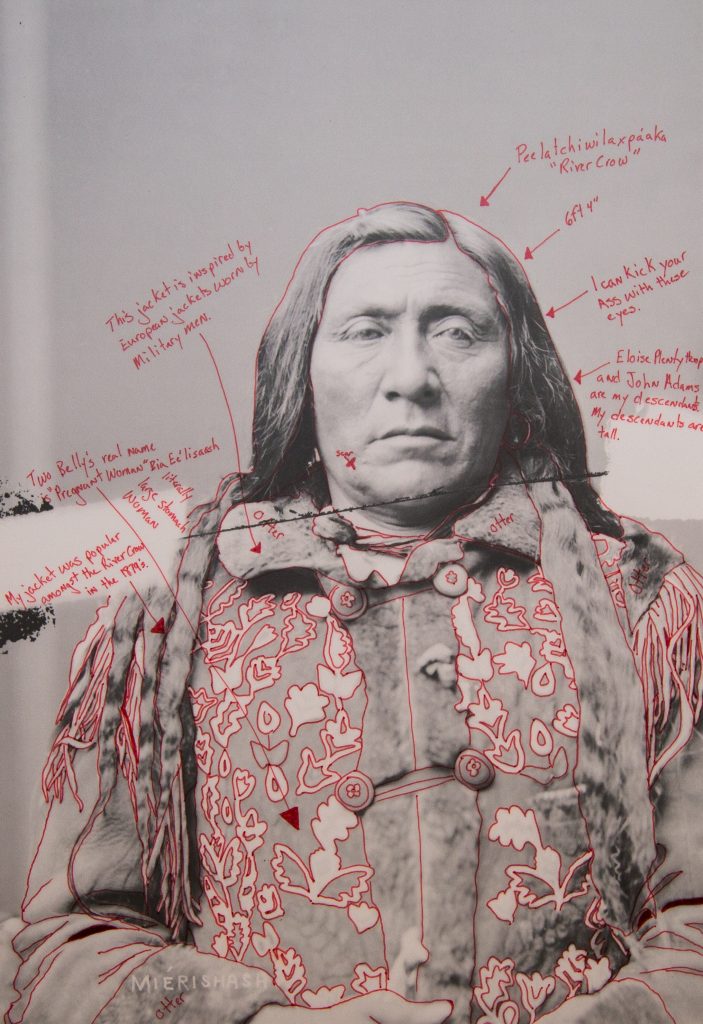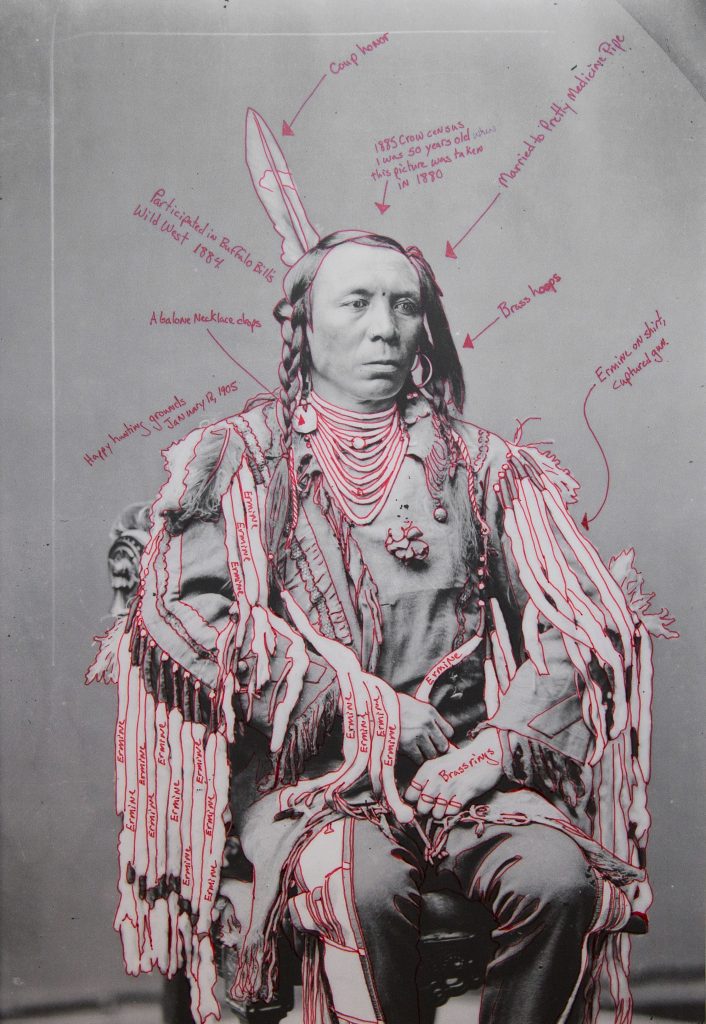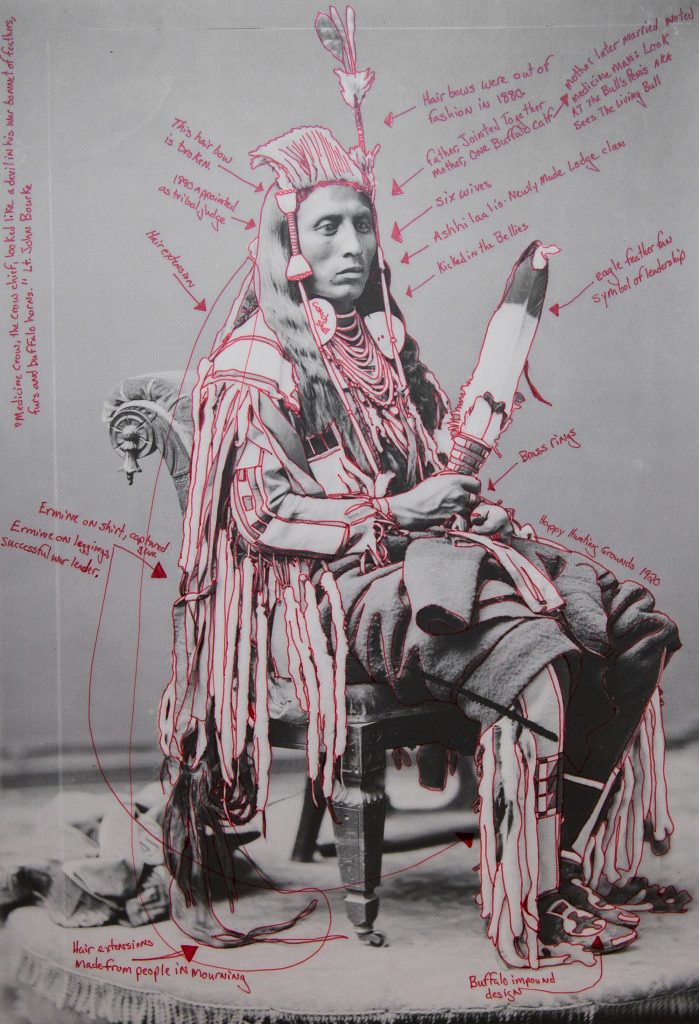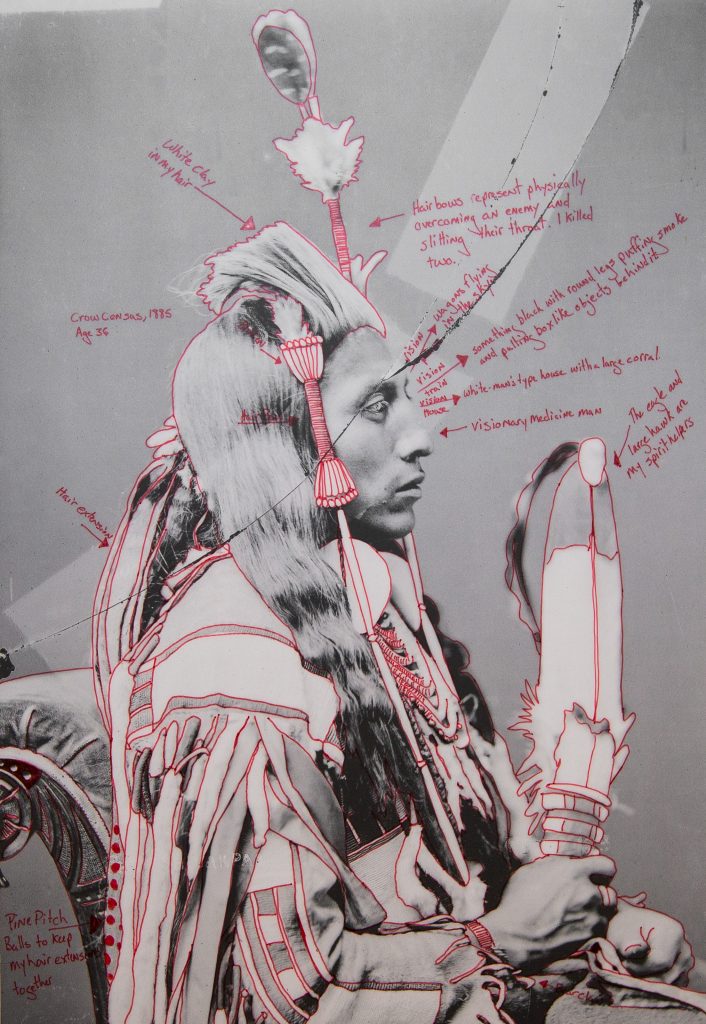Apsáalooke Bacheeítuuk in Washington, DC: A Case Study in Re-Reading Nineteenth-Century Delegation Photography
“We are going to take you to Washington,” they told me. I thought it over for a while and believing it to be a wise move, I told them I would go. This was my first trip east.
—Alaxchiiaahush (Plenty Coups), My First Journey to Washington
On March 22, 1880, the Washington, DC, Evening Star reported that, “A delegation of Crow Indians is on its way to Washington to confer with Secretary [of the Interior] [Carl] Schurz respecting certain lands in their reservation, discovered to be mineral in character, upon white settlers pressing. It is thought that the Crows will agree to cede the land to the government.”1 The mineral discovered was gold, and the land in question was located south of the Yellowstone River, then part of the eight million acres of Apsáalooke (Crow) land.2 Secretary Schurz and President Rutherford B. Hayes planned to meet with the delegation to negotiate a land cession of 1.6 million acres. One year prior, Bureau of Indian Affairs reservation agent Augustus R. Keller had advised Washington, DC, officials that the Apsáalooke “do not wish to part with it, and will not do so unless through force or fear, or being badgered into it.”3 Despite their clear and continued opposition to ceding the land, in March 1880, the Apsáalooke agreed upon Keller’s recommendation to send a delegation of six bacheeítuuk (good men or “chiefs”) from their homelands in Montana to Washington, DC, to discuss the matter directly with President Hayes.4
The first of the six bacheeítuuk selected to join the delegation was Alaxchiiaahush (Plenty Coups) (1848–1932), then a rising leader of the Mountain Apsáalooke—a subgroup of the Apsáalooke Nation known as the Ashalahó, or Many Lodges.5 In turn, he invited Bia Eélisaash (Two Belly) (lifedates unknown), an established leader and the delegation’s only representative of the River Apsáalooke—another subgroup known as Binnéassiippeele, or Those Who Live Amongst The River Banks. The remaining four delegates were all Mountain Apsáalooke leaders, including Iichiilachkash (Long Elk) (lifedates unknown), a leader of a group of Apsáalooke who intermarried with white trappers and government agency workers; Peelatchiwaaxpáash (Medicine Crow [Raven]) (1849–1920), a highly skilled war chief and visionary medicine man; Déaxitchish (Pretty Eagle) (1846–1905), a young, high-ranking warrior; and Peelatchixaaliash (Old Crow [Raven]) (1835–1905), the eldest of the six leaders.6 Peelatchixaaliash was the only delegate who had also joined an 1873 Apsáalooke delegation to Washington, DC. Traveling with agent Keller and two interpreters, the six bacheeítuuk bravely embarked on the arduous two thousand-mile journey to save their beloved homelands and fight for the sovereignty of the Apsáalooke Nation.

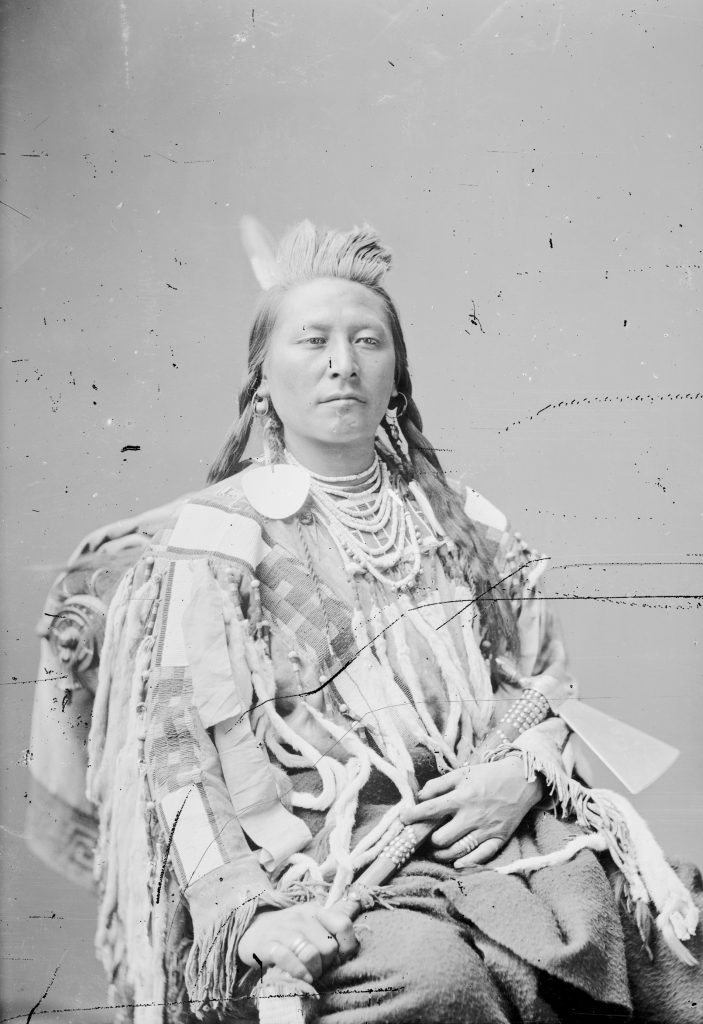
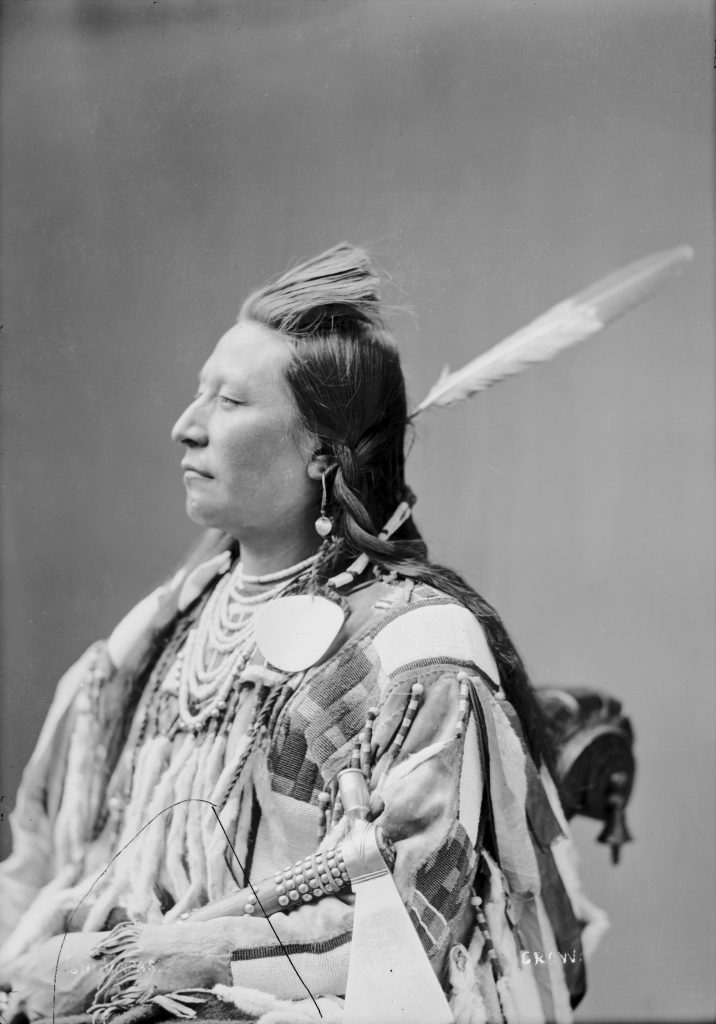
When Bell’s negatives were deposited at the Bureau of Ethnology, they became part of a vast archive of images of Native delegates whose portraits were believed to represent types rather than individuals.9 As historian Martha Sandweiss has noted, such an archive was “organized and controlled by its government creators, and they alone spoke for their Indian subjects. In the public arena, the Indians pictured in these photographs were mute; they had no identity, no history, save that invented for them by someone else.”10 Moreover, to meet the popular demand among non-Native audiences for images of Native peoples, many of these negatives were reprinted, reproduced, and disseminated widely—as cabinet cards for commercial sale, as illustrations in the popular press, as vintage prints for public and private collections, and as advertisements. The widespread circulation of these images often led to the loss of vital information about the sitters’ identities and the circumstances that brought them to the photographer’s studio. “These pictures quickly lost their capacity to narrate specific stories,” Sandweiss writes. “As unidentified portraits in an attic or unlabeled pictures in a flea market stall, they are now simply portraits of strangers, pictures that can evoke much, but tell little . . . full of information and time-bound stories beyond all recovering.”11
But not all are beyond recovery. Like many delegation photographs, Bell’s portraits of the Apsáalooke bacheeítuuk have been disseminated in a variety of contexts, from late nineteenth-century cigarette cards to twenty-first-century iced tea advertisements. Nevertheless, these photographs and their sitters have stories to tell—stories that, when disentangled from the histories of Manifest Destiny and American exceptionalism, can and must be told anew. In this essay, we propose a re-reading of Bell’s photographs of the 1880 Apsáalooke delegation, drawing on Apsáalooke histories, sources, and knowledge to reinterpret these portraits not as ethnographic stereotypes, but instead as complex images of Indigenous agency, sovereignty, and survival taken at a moment when the Apsáalooke Nation was fighting to save their homelands and resisting pressure to assimilate into settler culture. While it is necessary to acknowledge that such works functioned as symbols of colonial domination for their makers and collectors—including Bell, the Bureau of Ethnology, the United States government, and non-Native consumers—to interpret them only in this way is to deny the ambitions and intentions of the sitters, who, we argue, actively fashioned themselves as independent leaders of a sovereign nation.
In 1992, critic Lucy Lippard wrote that, “As Indian people struggle at all social levels to be recognized as active subjects rather than passive objects in the ongoing history of this country, photographs play a significant role. Cracking their surfaces, breaking them open to get at the living content that has been erased from our history books is a challenging task.”12 While historians, including Herman J. Viola, have lamented the “dearth of Indian source material” related to nineteenth-century delegations, this essay draws on Apsáalooke oral and written histories, ledger drawings, period newspaper accounts, and photographs to retell the vibrant story of the delegation’s travels and experiences.13 Although Lippard has noted that “total recall is impossible, even under the best of conditions,” by examining these vital resources alongside Bell’s photographs—as artist and coauthor Wendy Red Star (b. 1981) has done in her 1880 Crow Peace Delegation series—we aim to recover and reclaim the story of the delegation, drawing it out of the colonial archive as a case study in creating a more inclusive and comprehensive history of nineteenth-century delegation photography.
Our interpretative strategy—one that acknowledges the active agency of Native sitters in portraits made by non-Native artists—follows the work of Indigenous scholars, artists, and communities, from members of the Yankton Sioux Nation to the ongoing efforts of the National Museum of the American Indian, who refuse to see delegation photographs merely as emblems of a so-called “vanishing race.”14 Instead, historical photographs of Native peoples, as Henrietta Lidchi and Hulleah J. Tsinhnahjinnie have demonstrated, “can be used to tell and retell histories. . . . For Native communities, archives formerly identified as a place of subjugation are now more frequently the sites of reclamation and retrieval.”15 Moreover, by acknowledging that Bell’s photographs had meaning and significance to the Apsáalooke bacheeítuuk who sat for them, we find common ground with Lippard and Sandweiss, as well as art historian Elizabeth Hutchinson, who has aptly argued that denying Indigenous agency in self-presentation is, in effect, “a denial of their sovereignty—both personal sovereignty and tribal sovereignty—as it insists on keeping Native identity at a distance from contemporary economic, social, and political history.”16 Through a reexamination of the photographs of the 1880 Apsáalooke delegation, this essay ultimately aims to amplify Indigenous voices and histories, highlighting the role Native delegates played in the making of these images and the necessity of reviving their stories when re-reading these photographs today.
Bacheeítuuk “in Buckskins” and in Art
In the preface to his 1981 book, Diplomats in Buckskins: A History of Indian Delegations in Washington City, Viola argued that the focus of American historians on Native-non-Native warfare had overlooked an important aspect in this “clash of cultures,” namely the “less brutal but no less bitter . . . conferences that took place in the nation’s capital when Indian leaders met with government officials and tried through diplomacy to defend tribal interests from national desires.” Viola writes that this history “is fascinating, filled with humor and sadness, color and drama, promises made and treaties broken.”17 It is, however, a history that predates the establishment of the United States, as Native delegations first negotiated with British, French, and Spanish monarchs, who by the early eighteenth century recognized the economic and military importance of maintaining favorable relations with powerful Native Nations. The first Native delegation to visit Great Britain arrived in London in 1710.18 Comprised of four Haudenosaunee men, the delegates were welcomed as royals of a sovereign nation and were treated with the pomp and circumstance accorded to foreign leaders: they were presented elaborate gifts, toured London’s architectural marvels, dined with dukes, attended plays and operas, and visited the studio of court artist John Verelst, who painted full-length portraits of each delegate.19
Over the course of the eighteenth century, European protocol for hosting Native delegations became commonplace, so much so that in 1789 the newly established United States was forced, as Viola writes, “to conform to colonial practices or risk offending the powerful tribes arrayed along its frontiers.”20 Like their European predecessors, US officials initially treated Native delegates as leaders of sovereign nations. Historian Colin G. Calloway has noted that, “in [George] Washington’s day the government dealt with Indians as foreign nations rather than domestic subject. The still-precarious republic dared not ignore the still-powerful Indian nations on its frontiers.”21 However, the United States government would soon dramatically shift its position on the sovereignty of Native Nations, with the Supreme Court ruling in 1831 that, “It may well be doubted whether those tribes which reside within the acknowledged boundaries of the United States can, with strict accuracy, be denominated foreign nations. They may more correctly, perhaps, be denominated domestic dependent nations.”22 Despite this change, government officials continued to host Native delegations in Washington, DC, although their reasons for doing so changed. The United States now aimed to intimidate, assimilate, and forcibly obtain the lands of Native Nations. However, this shift in US policy did not alter the delegations’ understanding of their own sovereignty, and for decades Native delegates resiliently made the long and at times dangerous journey to the capital to continue their fight for autonomy, for the rights of their people, and for their ancestral lands.
After the first Haudenosaunee delegation visited Verelst’s studio in 1710, sitting for a portrait—be it painted or later photographed—became a routine part of any diplomatic visit. For these portraits, Native delegates fashioned themselves in diverse ways to assert their individuality and independence, often returning home with copies of their own. While these works were of value to the sitters, they were also systematically collected by the United States government. Beginning in 1821, Thomas McKenney, then superintendent of Indian trade, commissioned local artist Charles Bird King to paint Native delegates visiting the capital. Over the next two decades, King painted 143 portraits that depict members of twenty different nations, creating a pantheon of Native leaders, which itself became an important stop on delegation itineraries.23 While King’s portraits were put on public display—first in the War Office Building and later at the Smithsonian Institution—delegates were also able to order painted reproductions. Although slightly reduced in size, apparently to fit in the delegates’ luggage, these copies were, as McKenney wrote, “just as true and perfect” as King’s originals.24
By the early 1850s, photography had usurped painting as the preferred medium for delegation portraiture, given its speed and perceived ability to be objective and truthful.25 Although photographers initially used the daguerreotype process, by the late 1850s, the development of glass plate negatives increased the commercial potential of delegation portraiture, as multiple copies could now be printed from a single negative and widely distributed for sale.26 Photographer James E. McClees quickly recognized the profitmaking possibilities: between 1857 and 1858, his studio photographed members of thirteen Native delegations that visited the capital. These portraits were available for purchase as individual prints or in a bound volume, which he advertised “To the student of our history, as additions to libraries and historical collections, and as mementos of the race of red men, now rapidly fading away.”27
McClees’s early efforts to compile a photographic archive of Native leaders likely inspired secretary of the Smithsonian Joseph Henry to propose that the United States begin its own formal program of photographing delegations. Although initially ignored, Henry revisited the idea in 1865, when a devastating fire at the Smithsonian Institution destroyed nearly all of King’s painted portraits. Writing to the commissioner of Indian affairs, Henry saw this moment as an opportunity “to begin anew . . . a far more authentic and trustworthy collection of the principal tribes of the United States.”28 Although the government again dismissed his request—waiting more than a decade to implement an official program for photographing Native delegations—Henry’s endeavor found ideological support in Ferdinand V. Hayden, leader of the United States Geological Survey of the Territories, and funding from William Henry Blackmore, an English collector, speculator, and amateur ethnologist. Throughout the 1870s, Blackmore contracted privately owned photography studios—including those operated by Charles Milton Bell, Alexander Gardner, William Henry Jackson, Antonio Zeno Shindler, and Julius and Henry Ulke—to document Native delegates visiting the capital. The negatives were collected under the auspices of the United States Geological Survey of the Territories.29
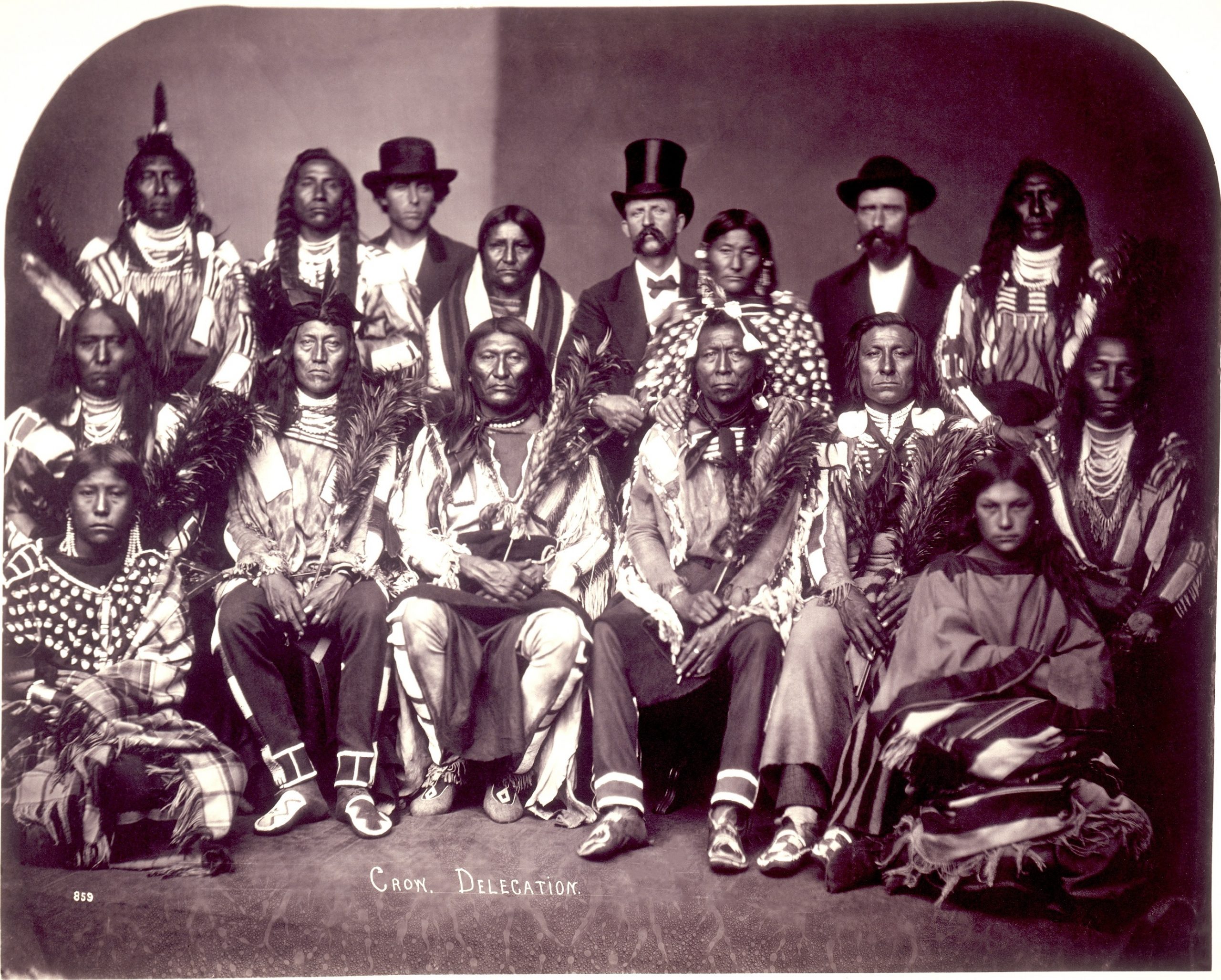
The six Apsáalooke bacheeítuuk who traveled to Washington, DC, in the spring of 1880 were therefore following a path paved by hundreds of Native delegates before them, including members of their own community. Although their experiences were their own, like their predecessors they presented themselves in the capital and in front of the camera as dignified leaders of a sovereign nation.
The 1880 Apsáalooke Delegation in Washington, DC
The Apsáalooke land is a gift from Iichíhkbaahile, First Maker, the Creator. Finding the land demanded a great deal of searching and sacrifice under the leadership of bacheeítche Shíipdeetash (No Vitals), who received a powerful dream around 1600 CE to go West and plant Ihchichiaee, or sacred tobacco seeds, in the perfect location on top of a high mountain. By doing this, Iichíhkbaahile promised Shíipdeetash a plentiful land where his people would flourish. The quest for this land took the Apsáalooke on a one hundred-year journey as they traveled along the Missouri River, across the Midwest, and into southern Canada, and even, it is rumored, through Colorado, and northern New Mexico, and northern Texas, before they reached their promised land in present-day Montana and Wyoming. Although generations had passed, the descendants of Shíipdeetash continued the mission until the land was found and the seeds planted. Born from determination and a promise for the best possible future, the new generation fulfilled Shíipdeetash’s vision and settled in their long-sought homelands.32 The resilience and dedication to find and fight for this land is deeply embedded in the history and hearts of the Apsáalooke Nation. Therefore, in 1880, when the United States government and white settlers encroached upon the Apsáalooke land with threats of mining, farming, and railroads, another journey was planned—this time to save their beloved homelands.
The 1880 delegation began their travels at the first Apsáalooke Agency, located near present-day Livingston, Montana. The local Helena Weekly Herald reported on their departure, noting that agent Keller “had passed through town [Bozeman, MT] yesterday with his Indians on the way to Washington. It is really a matter in which all Montana is vitally interested, especially as far as the interests of the Northern Pacific railroad are concerned.”33 Although white settlers in Montana saw the Apsáalooke reservation as an “intolerable barrier to many of the most important enterprises of the nation,” the delegation had other beliefs.34
Prior to leaving Montana, at least three delegates sat for portraits in the Bozeman studio of photographer Henry Bird Calfee (1847–1912) (figs. 13–15). Déaxitchish (Pretty Eagle), Iichiilachkash (Long Elk), and Bia Eélisaash (Two Belly) were photographed individually, seated in what appears to be the same chair in the identical position, evidenced by the similarities of the carpet pattern and wall molding in the background of each image.35 The three portraits were subsequently printed as cabinet cards and sold as part of Calfee’s series The Enchanted Land or Wonders of the Yellowstone National Park, which aimed to promote the park as a destination for white settlers to visit and enjoy. Between 1874 and 1881, Calfee took at least 295 photographs in Yellowstone, the vast majority of which are landscape stereographs featuring views of geysers and dramatic rock formations.36 Although some feature tourist camps and white visitors engaged in leisure activities, these three cabinet cards are distinctive in the series, both as studio portraits and as representations of the region’s Indigenous population. Calfee likely sold these collectible cabinet cards as souvenirs to tourists visiting his Bozeman studio, and the back of each bears the photographer’s imprint advertising his vast inventory of magic lantern slides and stereopticon views.
Although Calfee’s portraits met the market’s growing demand for “exotic” images of the “enchanted” West, these portraits are, nevertheless, important documents in the delegation’s story. Not only do they speak to the importance of photography in chronicling delegation travel, but they also reveal the sitters’ savvy with the picture-making process and their keen understanding of the power of self-presentation. In Déaxitchish’s portrait, his expression of cool defiance is amplified by the casual placement of a rifle over his crossed legs. Similarly, Iichiilachkash gently cradles an ax in his lap while directly confronting the viewer’s gaze. Both men wear war shirts and leggings with beaded geometric designs, indicative of their status as accomplished Apsáalooke leaders. In contrast, Bia Eélisaash wears a stunning beaded floral-patterned leather jacket with otter fur–trimmed sleeves and closures—a distinct style that sets him apart from the Mountain Apsáalooke delegates. He wears his hair loose, unlike both Déaxitchish and Iichiilachkash, who adopted the then-popular pompadour hairstyle.37 When photographed in Bell’s studio two months later, the three men wore the same dress and hairstyles seen in Calfee’s portraits. This continuity demonstrates that they wore formal attire consistent with their own identifiable cultural preferences, rather than those of the photographer. These portraits, therefore, should not be dismissed as romanticized fictions, but instead understood as valuable historical records of personal and cultural identity.
Venturing West to go East, the first part of the delegation’s journey was by stagecoach, as they traveled five hundred miles to Utah to connect with a train bound for Washington, DC.38 Many of the delegation members had never traveled by train, including Alaxchiiaahush, who later described the experience:
We entered the cars and sat down. We placed our bundles on shelves, and looked out of the window. The train followed the river. Through the windows, we could see many horses, game and mountains. . . . We thought the train journey was grand. I realized however, that it was not a horse that pulled and I wondered what made it go so fast. Birds would fly along outside our windows, they were swift, but before long we outdistanced them.39
Peelatchiwaaxpáash (Medicine Crow [Raven]) later recorded his impressions of the train in a detailed graphite drawing (fig. 16), differentiating between three types of train cars—coal, cattle, and passenger—and capturing a sense of their speed with steam billowing from each engine. This drawing is one of several that Peelatchiwaaxpáash completed from memory upon returning from Washington, DC, when he was encouraged to visually document his travels by Charles H. Barstow, chief clerk at the Apsáalooke Agency. Barstow, who actively collected Apsáalooke artifacts and ledger drawings, annotated the works in ink, recording names and descriptions directly from Peelatchiwaaxpáash.40
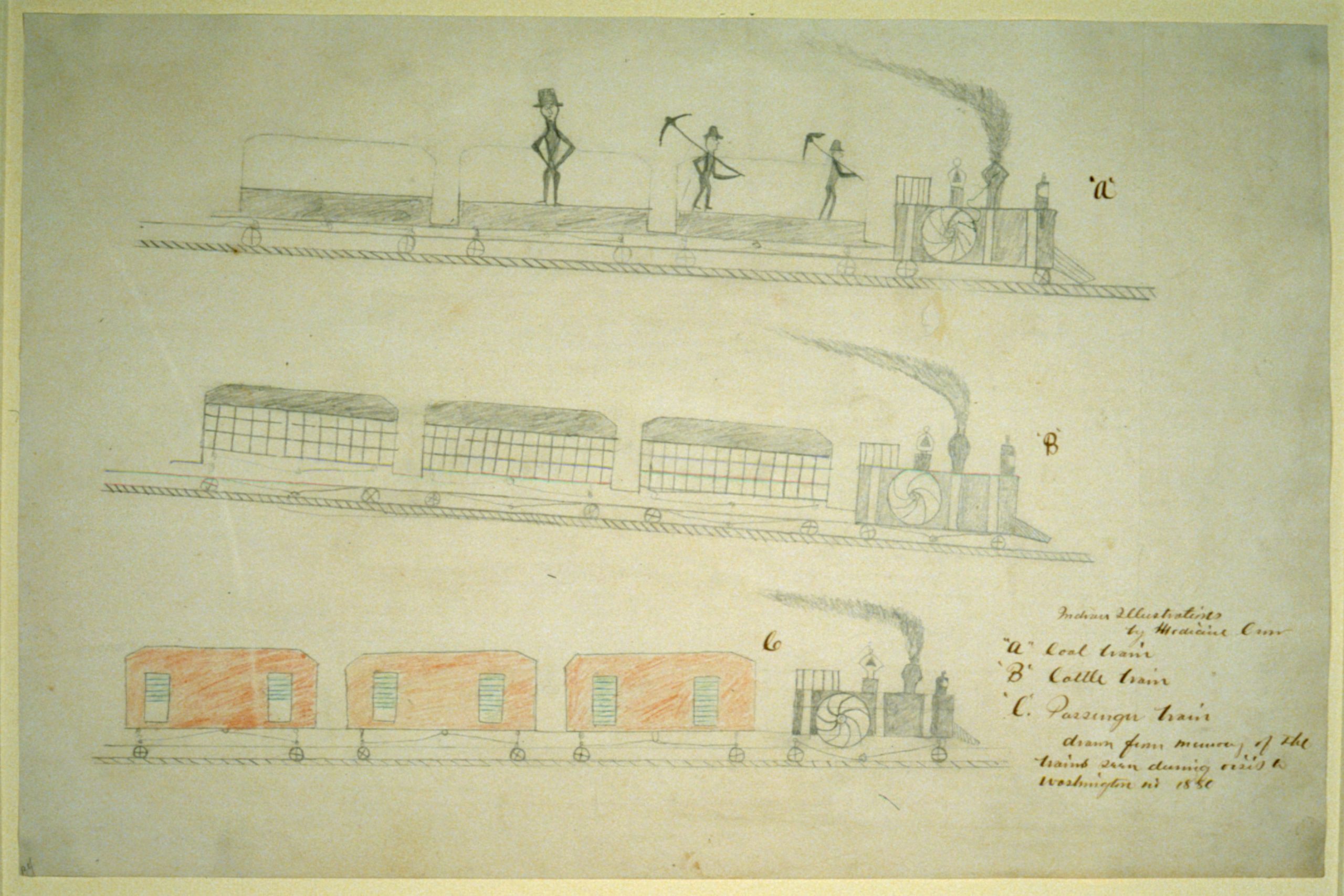
In their negotiations, it was also suggested that the Apsáalooke move out of their homelands to North Dakota, that fighting be prohibited between the Apsáalooke and neighboring nations, and that Apsáalooke children be sent to boarding schools. The delegation rejected the government proposals and Alaxchiiaahush described their persistent opposition: “When we voiced our objections, the President kept us in Washington for over a month, during which time, we had several conferences with him, in which he endeavored to overrule our objects, but in this he failed. The President suggested giving us another hunting ground in North-Dakota [sic], I refused however because we did not wish to leave our country.”45 At a stalemate, the delegation was forced to stay an extra month in the capital—a tactic adopted by government officials to wear down delegates and weaken their negotiating position, thereby coercing treaties favorable to US interests.
On days when they were not busy brokering with government officials, the delegation went sightseeing around the city, including a visit to Mount Vernon with a delegation from the Bannock Nation.46 Alaxchiiaahush recalled the significance of this visit to his biographer:
I was one among many visitors at Mount Vernon that day, and yet there was no talking, no noise, because people were thinking of the great past and the unknown future. . . . I sent my thoughts to the Great White Chief in that other life. I spoke to him, and I believe he heard me. I said: “Great Chief, when you came into power the streams of your country’s affairs were muddy. Your heart was strong, and your tongue spoke straight. Your people listened, and you led them through war to the peace you loved. They remember your words even to this day, are helped and made strong by them. As you helped your people, help me now, an Absarokee [sic] chief, to lead my people to peace. I, too, have a little country to save for my children.”47
Over the next month, the delegation visited the Capitol Building and the circus, admired boat traffic along the Potomac River, and attended several social events, including a celebration of the Independent Order of Odd Fellows, complete with a military parade, elaborate dinner, dancing, and a string band.48 As noted above, Peelatchiwaaxpáash recorded many of these excursions in a series of ledger drawings, providing invaluable visual documentation of his time in Washington, DC. In his depiction of the Capitol Building (fig. 17), he included two flags and a dome topped with a figure wearing an eagle-feathered helmet—a depiction of Thomas Crawford’s Statue of Freedom (1863; Capitol Building Dome, Washington, DC). He also vividly recalled several animals from the circus, which he sketched and named, including “big head fish” and “dog and man” (or monkey) (fig. 18), as well as a number of different birds, notably “Wonder Tail Comes from Above” (or peacock) (fig. 19).49 Taken by the various boats he saw on the Potomac, he recorded two military monitors with flags and cannons, as well as a small fishing boat, perhaps added for scale (fig. 20). Together these drawings provide a glimpse into the experiences and impressions of Peelatchiwaaxpáash, who used graphite and colored pencil to memorialize the trip, thus providing a visual counternarrative to the account set forth in government documents, newspaper articles, and portrait photographs made by non-Native artists.
In Charles Milton Bell’s Studio
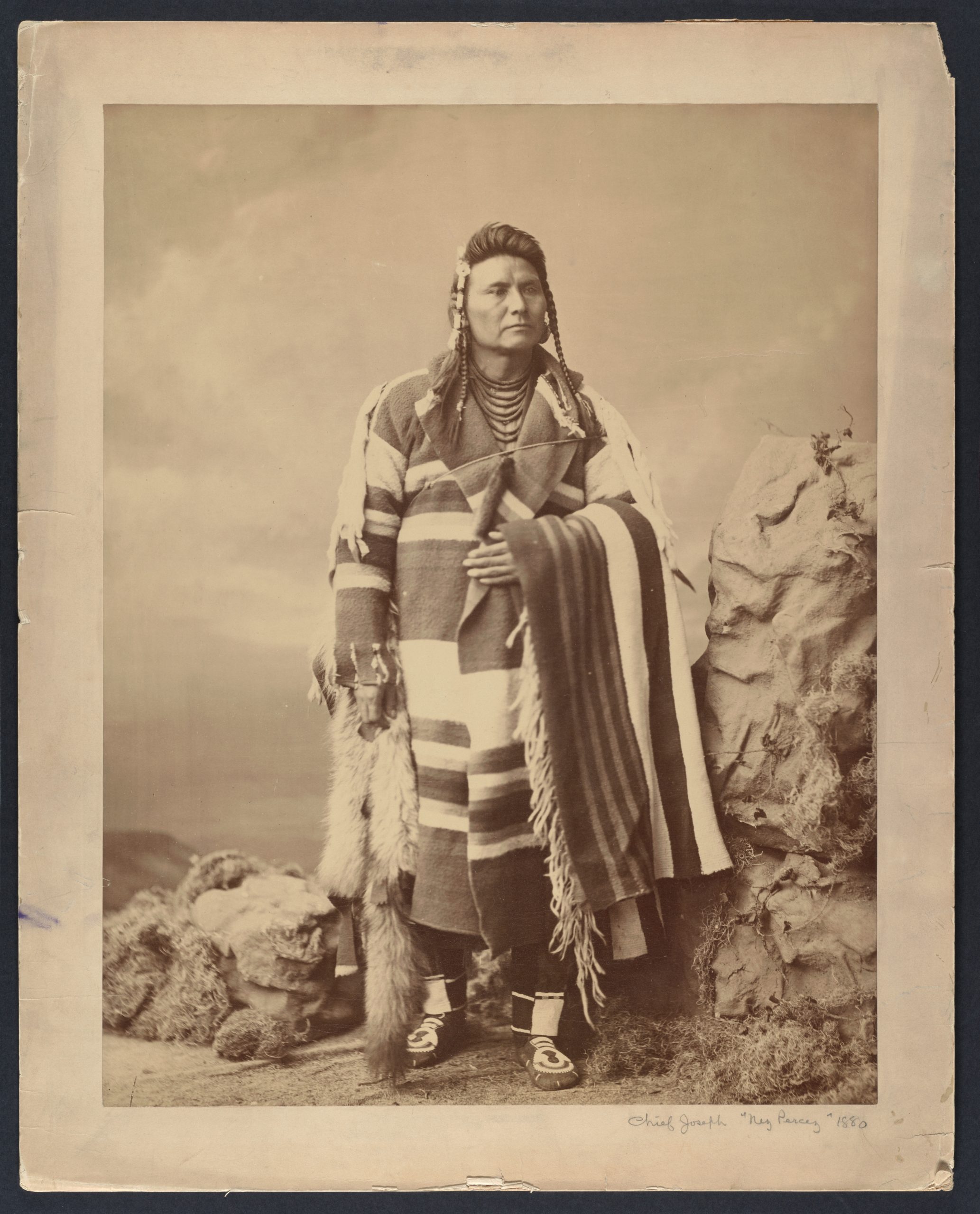
The exact date of the delegation’s visit to Bell’s studio is unknown, although it may have been near the end of their trip, as delegations were often photographed as a kind of reward following their cooperation with the US government.50 Native delegates were among Bell’s most esteemed and frequent clients, and he photographed hundreds of Indigenous leaders for the Department of the Interior and the Bureau of Ethnology, as well as for his own commercial purposes. Photographs taken on commission for government agencies tended to be simple portrait busts, often framed head-on and in profile against an empty backdrop. This practice was informed by the then-popular but now discredited fields of phrenology and physiognomy, which incorrectly believed that detailed views and measurements of one’s head or face could provide scientists with the information necessary to assess the character of an individual. In contrast, Bell’s commercial portraits, which he often sold as collectible cabinet cards, were shot in elaborate settings, as seen in his portrait of Hinmatóowyalahtq’it (Chief Joseph) (fig. 21), who was photographed standing in an artificial landscape composed of a papier-mâché rock, faux moss, and a painted backdrop.51
The portraits of the 1880 Apsáalooke delegation conform to the pseudoscientific formula Bell adopted when photographing delegates for the Bureau of Ethnology. As was common practice, Bell took one group portrait (see fig. 1) featuring all delegation members alongside US government officials, including agent Augustus Keller and two interpreters. While Bia Eélisaash stands—his stature and distinction palpable in his confident stance and solemn gaze—the five Mountain Apsáalooke delegates are seated in the front row, each wearing formal attire. From right to left, Déaxitchish, Alaxchiiaahush, and Iichiilachkash have their feet firmly planted on the ground holding axes in their laps. Peelatchiwaaxpáash adopts a similar pose but holds an eagle feather fan—a symbol of his leadership. In contrast, at far left, Peelatchixaaliash (Old Crow [Raven]) crosses his right leg over his left, resting one hand on his knee and the other on a cane to proudly display the fringe on his leggings and the ermine on his coat. As the eldest of the six delegates and the only one to have previously traveled to Washington, DC, his self-assured posture and steady gaze convey both his prominence and confidence.
With the exception of Iichiilachkash, who was only photographed with the larger group, each bacheeítche also sat for an individual portrait, which Bell took from multiple angles (see figs. 2–11). As in the group portrait, each delegate wore their formal Apsáalooke attire. Bringing these honorable outfits on their long, tiresome journey to and from Washington, DC, and wearing them in their portrait photographs must be understood as a deliberate choice—one aimed at conveying their status as leaders of a sovereign nation and equals to the president of the United States. In several of Bell’s three-quarter length views (see figs. 6, 8, 10), an ornately carved Victorian chair and the studio’s architectural moldings are visible, further underscoring the intercultural nature of this encounter. Bell’s approach to photographing Native delegations, combined with the government’s vast accumulation of these works alongside artifacts in anthropological archives, has contributed to the images being read—both in Bell’s time and in ours—as ethnographic documents of a type, rather than individualized portraits capable of conveying personal and cultural stories. This has often been confounded by the perceived stiffness and stoicism of the sitters. The delegates’ body language and facial expressions do not reflect their passivity in the picture-making process, but are instead the result of long exposure times, which required absolute stillness, and the established conventions of portrait photography, which called for sitters to adopt a serious appearance.52
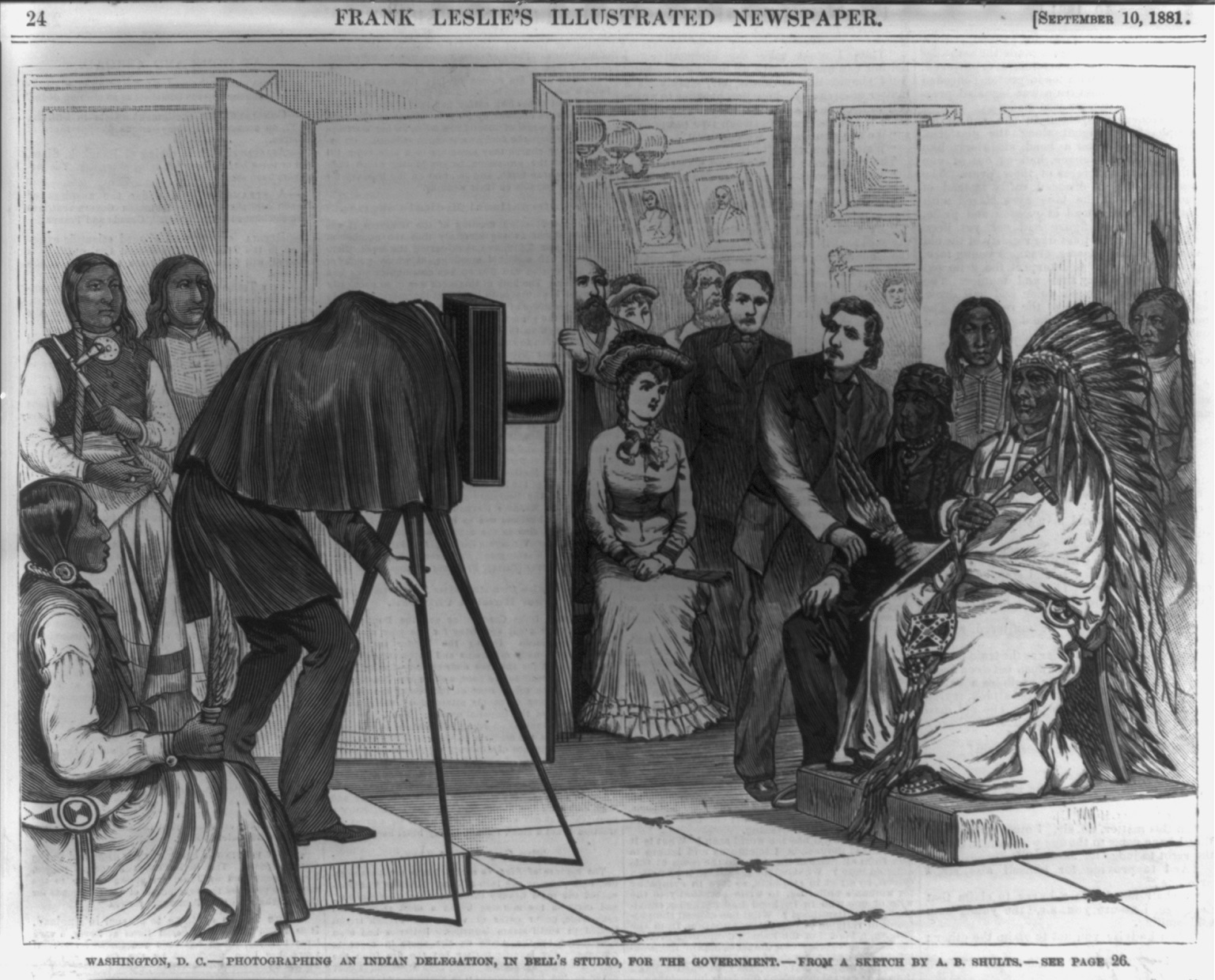
Moreover, the experience of visiting Bell’s studio was a highly formalized and, most likely, public event. In 1881, Frank Leslie’s Illustrated Newspaper published an illustration after a sketch by artist A. B. Shults of a Lakota delegation in Bell’s studio, providing valuable insights into the performative aspect of delegation portrait photography (fig. 22). Although Bell is seen under the cloth of his camera, the delegates pose not only for the photographer, but also for a group of non-Native onlookers, who vie for a view of the sitters through the adjacent door. While the bystanders observed the delegates, the newspaper noted that the sitters “watched every movement of the operators with great interest, and were profuse in thanks when informed that each one would be given copies of his photograph to take with him to his people.”53 Although it is not known if the 1880 Apsáalooke delegation received prints, it seems probable that they—like the 1873 delegation—would have obtained copies to bring home.
Bell deposited his negatives at the Bureau of Ethnology, and they were soon reproduced in a variety of contexts beyond the control of both the photographer and the sitters. As early as 1888, Bell’s portrait of Peelatchixaaliash (see fig. 11) was used as the basis for a commercial color lithograph produced by the Virginia-based tobacco-manufacturing firm, Allen & Ginter (fig. 23). In the late 1870s, tobacco companies began including small, vibrantly printed cards inside flimsy cigarette packs. While these cards stiffened the packs, they also provided an opportunity for advertising. Intended as collectibles, the cards were issued in series of varied subject matter—from baseball players and famous actors to Native American leaders. The card depicting Peelatchixaaliash, labeled “King of the Crows,” was one in a series of fifty American Indian Chiefs, most of which were reproductions made after delegation portraits.54 More than a century later, another image of the 1880 Apsáalooke delegation would be used by the Honest Tea beverage company (The Coca-Cola Company) to advertise their First Nation Organic Peppermint Herbal Tea (fig. 24). Featuring Bell’s portrait of Peelatchiwaaxpáash (see fig. 6), the label’s iconic “T” obscures much of the photograph, but his face and formal attire were nevertheless recognizable to coauthor Wendy Red Star, who first came across the bottle in a Los Angeles supermarket in 2004. Far removed in both time and space from its original context, the image called out from across the ages for a re-reading. To do so, Red Star turned to the 1880 delegation and to Apsáalooke knowledge and resources for answers.
Re-Reading Delegation Photography: 1880 Crow Peace Delegation Series
On May 14, 1880, after spending more than one month in Washington, DC, the delegation came to an agreement with President Hayes that would allow the Apsáalooke to stay in their homelands if they relinquished 1.6 million acres of land, or roughly 20 percent of their reservation, for the construction of the railroad.55 After the delegation’s return, Déaxitchish recounted the final negotiations to an Apsáalooke council held on June 12, 1880: “I saw the Great Father [President Hayes] again and told him that I would not let the cattle, or the Railroad, pass over my land. Finally the Great Father told us that they wanted the land that I have already told you about, and that if we did not give it up it might be bad for us, that they might put us in some other place.”56 Alaxchiiaahush described the terms of their agreement, noting that, “The President then said: ‘I will grant your request to remain in the country which you now inhabit, but in return I expect you to agree, to let us build the railroad through the valley of the Yellowstone.’ I answered: ‘When I return to my people, I will talk with them, and hear their objections. You can then send us one of your servants, and we will hold a council with him, he will inform you of the results.’”57 When the council gathered, a compromise was proposed by Uuwatchiilapish (Iron Bull), a member of the 1873 delegation, altering the boundaries of the land to be sold. Accepted and signed by the Apsáalooke, the amended agreement was returned to Washington, DC, and subsequently approved by the United States Congress on April 11, 1882.58
While still in Washington, DC, Alaxchiiaahush recalled being “anxious to return home, and see my people again . . . although we dreaded the long journey. When the day arrived, we again entered the cars and traveled for a long time.”59 On their way, the delegation stopped in Carlisle, Pennsylvania, to inspect the newly established Carlisle Indian School—a requirement of several Native Nations prior to sending their children to the school.60 Founded in 1879 by Richard Henry Pratt, who famously coined the phrase, “Kill the Indian, and Save the Man,” the boarding school employed a brutal program of forced assimilation, removing Native American and First Nations children from their communities, culture, language, and homelands in an attempt to “civilize” and “Americanize” Indigenous peoples. The delegation’s visit to the school is documented in an 1880 photograph (fig. 25), in which the six bacheeítuuk are seen seated and standing alongside a Bannock delegation, interpreters, and government agents. This photograph presents the delegates wearing much of the same attire seen in the portraits taken by Calfee in Bismarck and Bell in Washington, although Bia Eélisaash wears a long overcoat rather than his floral beaded jacket, possibly a gift from President Hayes.61
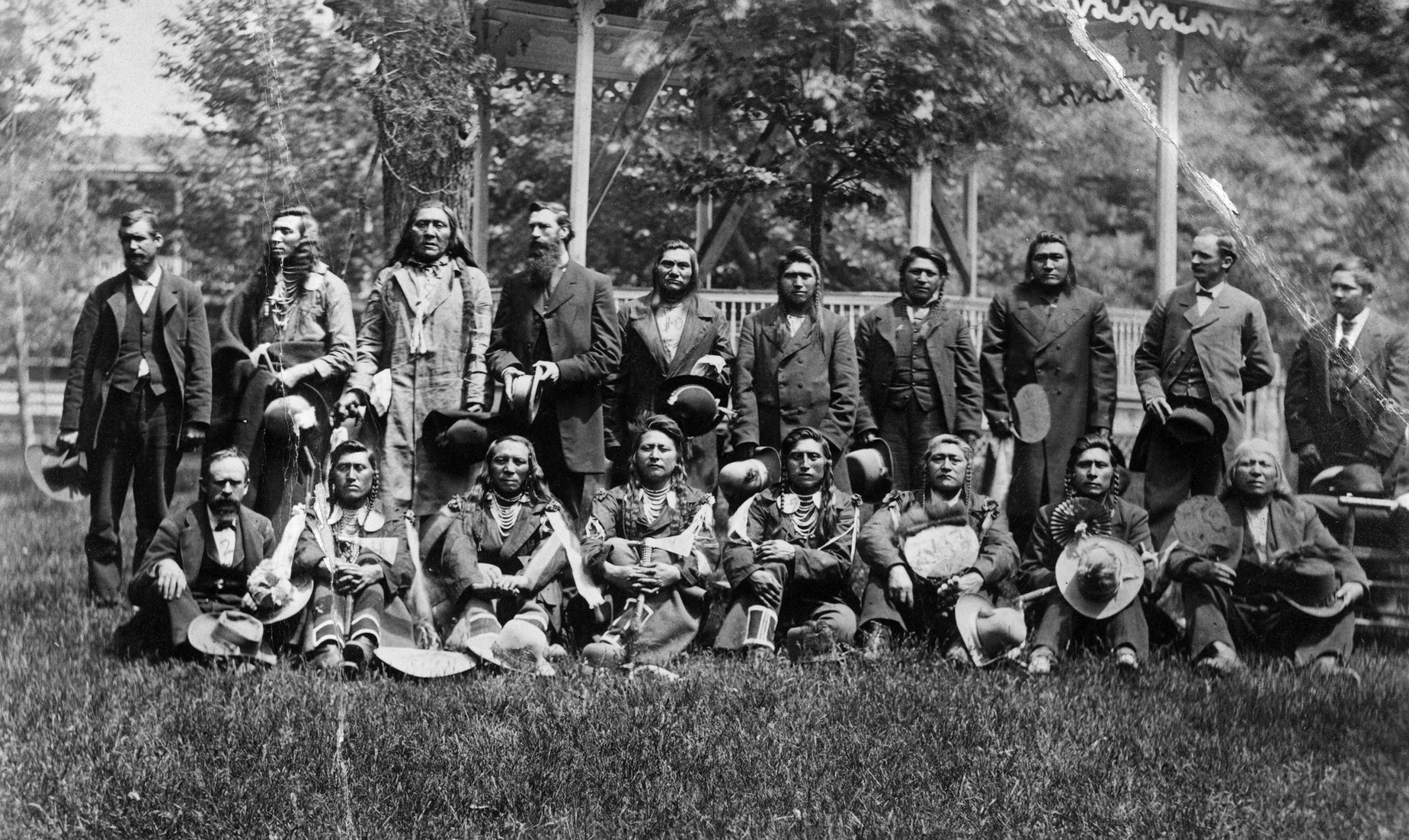
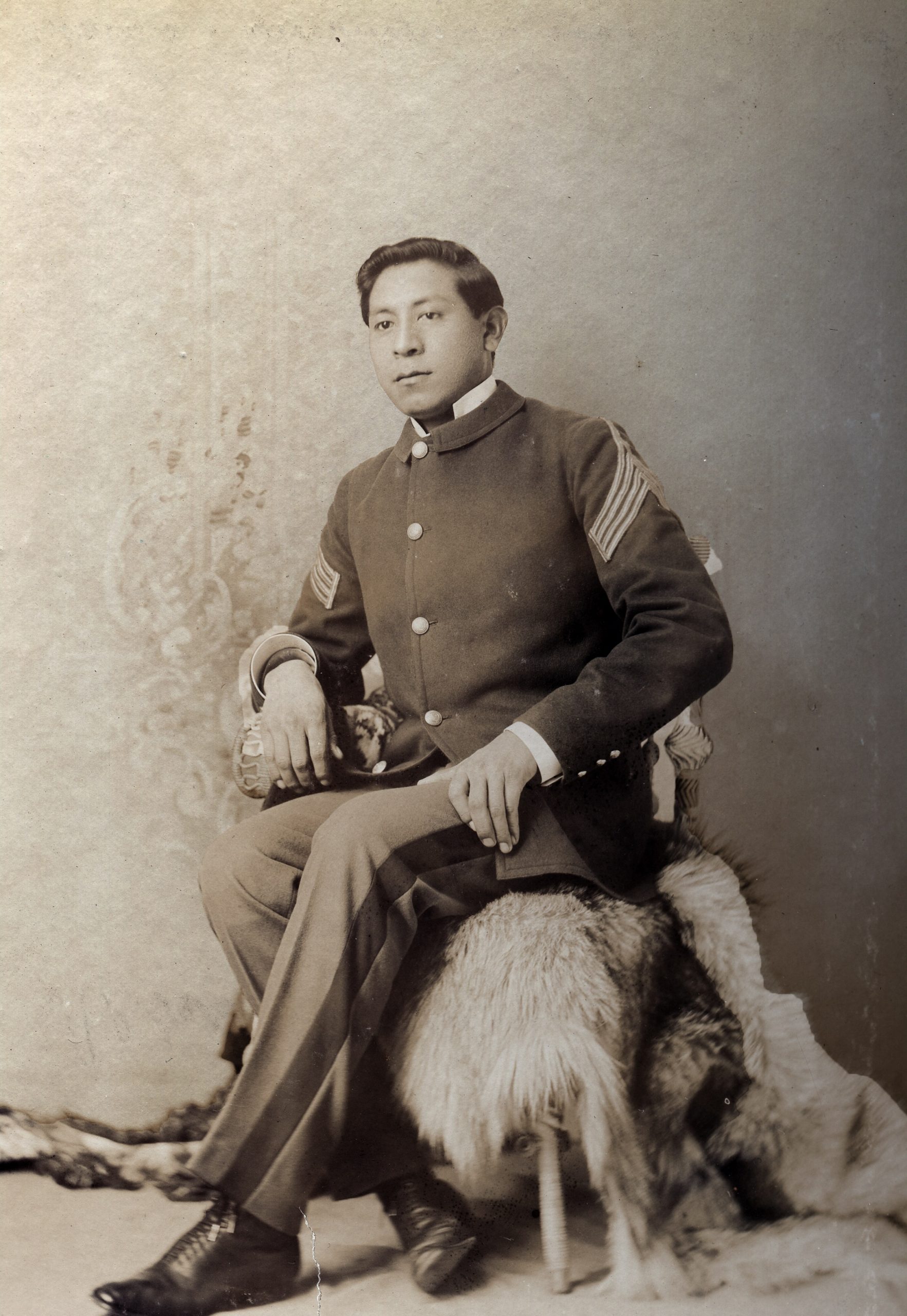
Eight years after this photograph was taken, Alexander Upshaw, a child from the Apsáalooke Nation, entered the Carlisle Indian School (fig. 26). Although he graduated in 1897, Upshaw struggled with the stripping of his identity and ultimately decided to return to the Apsáalooke reservation. Prior to his tragic and suspicious death in jail in 1909, Upshaw worked as the primary interpreter for photographer Edward Curtis during his time on the Apsáalooke reservation. Given the name Auk-ba-axua Balat Duchay, or “One Body Image Taker,” Curtis photographed the Apsáalooke in 1908 for the fourth volume of his magnum opus, The North American Indian—a twenty-volume publication funded by J. P. Morgan with an introduction by Theodore Roosevelt. Without the knowledge, interpretative skills, and connections of Upshaw, Curtis would not have gained the trust necessary to photograph his Apsáalooke subjects, including several bacheeítuuk and two of the 1880 delegates—Peelatchiwaaxpáash (pl. 117) and Alaxchiiaahush (pl. 124).62
Upshaw provided Curtis with critical insights into Apsáalooke culture, rites of passage, and regalia, which he subsequently published in a text accompanying his photographs. Although presented as Curtis’s own, this cultural knowledge was obtained through Upshaw. Overcoming a devastating boarding school experience, Upshaw subverted America’s ruthless colonial system and preserved Apsáalooke history in a volume dedicated to documenting the “vanishing race.” A century later, the information presented in Curtis’s volume was reclaimed by Wendy Red Star, in order to untangle and unpack the stories and symbolism embedded within Bell’s photographs of the 1880 Apsáalooke delegation.
Conducting research for her 1880 Crow Peace Delegation series (figs. 27–32), Red Star drew from Upshaw’s knowledge—as recorded in Curtis’s text—to research the formal attire worn by the delegates in Bell’s portraits.63 Inscribing the photographs with red pen, she highlighted those symbols that convey each delegate’s achievements, notably of the four coups necessary to attain bacheeítche status: stealing a weapon; stealing a horse within an enemy camp; touching an enemy in battle; and leading a successful war party. To examine these symbols in greater detail, let us return to the portrait of Peelatchiwaaxpáash, whose chance encounter with Red Star inspired her to research the photograph and led to the 1880 Crow Peace Delegation series. In contrast to Bell’s photographs (see figs. 6–7), Red Star’s annotated works (see figs. 31–32) bring Peelatchiwaaxpáash’s accomplishments and individuality to the fore, demonstrating how delegation portraiture can and should be re-read. Through her detailed analysis of his attire, his attainment of the four coups can be registered: the ermine on his shirt indicates that he stole a weapon, captured a horse from within an enemy camp, and was the first to touch an enemy in battle, while the ermine on his leggings signifies that he led a successful war party. The conch shells, dentalium hair bows, and shell disc loop necklace are representative signs of a trade system that predated colonization. Although one of the bows is broken and missing its feathered attachment, he wears it assuredly, providing a glimpse of his confident personality. Moreover, the incorporation of European embellishments, such as the brass shoe buttons on the last row of his loop necklace, reflect the aesthetic ingenuity of the maker.
His moccasins feature the design of the buffalo pound—a reference to the practice of hunting buffalo into an impasse—and the eagle feather fan signifies both his status as a leader and his connection to the bird as a spiritual guide. As was popular among Mountain Apsáalooke, his bangs were stiffened using white clay and styled in a pompadour. He also wears long hair extensions, most likely cut from the hair of someone in mourning, as it is common practice in Apsáalooke culture to cut one’s hair in honor of the dead. These extensions, which cascade to the floor, are believed to bestow power on the person wearing them. The geometric beadwork designs that adorn his shirt and leggings are specific to the Apsáalooke and were made using seven specific seed bead colors: white, dark green, red, pink, yellow, light blue, and dark blue. Although the world of diplomatic delegations was dominated by men—both Native and non-Native—credit and pride are due to the delegates’ wives, who took it upon themselves to present their family members in the finest attire.
In addition to outlining the symbolism embedded in Peelatchiwaaxpáash’s clothing, Red Star inscribed the photograph with biographical details gathered from a variety of sources, including archives, anthropological books, newspapers, and, most importantly, the cultural knowledge of the Apsáalooke community and her personal experiences growing up on the Crow Reservation. She includes information about his appointment as tribal judge in 1890 and details of his lineage, including his father, Jointed Together; mother, One Buffalo Calf; and adopted father, Sees The Living Bull, a powerful medicine man. Moreover, historical Apsáalooke accounts of his personality, notably his sense of humor, counter his serious facial expression in Bell’s portrait. For example, Alaxchiiaahush told his biographer that, “Medicine-Raven loved a joke, and would work very hard to make a good one because he liked to laugh. I was with him once when he made a joke that nobody laughed at, except himself.”64 These personal details not only enliven Bell’s photograph, but also help to recover his humanity. Using red pen to trace, mark, and inscribe what has been lost over years of colonization and systemic racism, Red Star’s hope is that the next generation of artists, students, and observers might use the 1880 Crow Peace Delegation series as a more authentic starting point from which to preserve, share, and understand Apsáalooke culture.
In the years since the 1880 delegation, the Apsáalooke have been continually pressured by the US government to cede their homelands. Several more delegations traveled to Washington, DC, to fight for the sovereignty of the community and their land. The Apsáalooke Nation once held 38.5 million acres; its current size is 2.3 million acres. This land remains the heart of the Apsáalooke Nation and the stories of those who fought to save it, including the six bacheeítuuk of the 1880 Apsáalooke delegation, must be preserved and shared. In this essay, we have aimed to illustrate how stories of Indigenous agency, sovereignty, and survival—stories that have often been silenced or ignored—can be told anew through re-readings of nineteenth-century delegation photographs. When researching and reinterpreting portraits of Native peoples made by non-Native artists, “some of these stories will remain private ones,” as Sandweiss has noted. “Others will inevitably become loud, noisy stories, cast out into the world to compete with the nineteenth-century stories that for so long shaped popular American thought about nineteenth-century Indian life, asserting loudly and forcibly that the vanishing race is still here.”65 By relying on Indigenous histories, resources, and voices, these vital stories can revise our understanding of the past and inspire hope for a more inclusive and equitable future.
Cite this article: Wendy Red Star and Shannon Vittoria, “Apsáalooke Bacheeítuuk in Washington, DC: A Case Study in Re-Reading Nineteenth-Century Delegation Photography,” Panorama: Journal of the Association of Historians of American Art 6, no. 2 (Fall 2020), https://doi.org/10.24926/24716839.10672.
PDF: Red Star and Vittoria, Apsáalooke Bacheeítuuk in Washington, DC
Notes
- “Washington News and Gossip,” Evening Star (Washington, DC), March 22, 1880. ↵
- In 1851, after participating in the first Fort Laramie Treaty, the Apsáalooke Nation controlled 38.5 million acres of land in present-day Montana and Wyoming. The second Fort Laramie Treaty of 1868 reduced their land holdings to eight million acres. Today, the Apsáalooke reservation is comprised of 2.3 million acres of land. See Frederick Hoxie, Parading Through History: The Making of the Crow Nation, 1805–1935 (Cambridge: Cambridge University Press, 1997), 92; and C. Adrian Heidenreich, “The Crow Delegation to Washington, D.C., in 1880,” Montana: The Magazine of Western History 31, no. 2 (Spring 1981): 55. ↵
- Augustus R. Keller to Ezra Ayres Hayt, June 19, 1879, quoted in Heidenreich, “The Crow Delegation to Washington, D.C., in 1880,” 55. ↵
- Hoxie, Parading Through History, 118. ↵
- Alaxchiiaahush (Plenty Coups), “My First Journey to Washington,” in William Wildschut, incomplete and unpublished Biography of Plenty Coups (1920s), Box 2B, Folder 67, Frederick E. Hoxie Collection, Little Big Horn College Library, Crow Agency, Montana. ↵
- Hoxie, Parading Through History, 118; and Joseph Medicine Crow, From the Heart of the Crow Country: The Crow Indians’ Own Stories (New York: Crown Trade Paperbacks, 1992), 44. ↵
- Newspaper reports announced the delegation’s arrival on April 10, 1880, and their departure on May 18, 1880. “Grievance of the Crow Indians,” Evening Star, April 10, 1880; and “Washington News and Gossip,” Evening Star, May 17, 1880. ↵
- Individual portrait photographs of five of the six delegates survive. Iichiilachkash (Long Elk) may have been individually photographed by Bell, but negatives or prints have yet to be located by the authors. ↵
- Heather A. Shannon and Sky Campbell, “Prominent Americans: Photographs of Treaty Delegates at the Smithsonian,” American Indian 15, no. 2 (Summer/Fall 2014), https://www.americanindianmagazine.org/story/prominent-americans-photographs-treaty-delegates-smithsonian. ↵
- Martha Sandweiss, Print the Legend (New Haven: Yale University Press, 2002), 246. ↵
- Sandweiss, Print the Legend, 216. ↵
- Lucy Lippard, ed., Partial Recall (New York: New Press, 1992), 15. ↵
- Herman J. Viola, Diplomats in Buckskins: A History of Indian Delegations in Washington City (1981; reprint, Bluffton, SC: Rivilo Books, 1995), 10. ↵
- See, for example, Reneé S. Flood, Shirley A. Bernie, and Leonard R. Bruguier, Remember Your Relatives: Yankton Sioux Images (Marty, SD: Marty Indian School, 1985); Tim Johnson, ed., Spirit Capture: Photographs from the National Museum of the American Indian (Washington, DC: Smithsonian Institution Press in association with the National Museum of the American Indian, 1998); Jane Alison, ed., Native Nations: Journeys in American Photography (London: Barbican Art Gallery, 2000); Henrietta Lidchi and Hulleah J. Tsinhnahjinnie, eds., Visual Currencies: Reflections on Native Photography (Edinburgh: National Museums Scotland, 2009); and Shannon and Campbell, “Prominent Americans.” Moreover, the twelve essays published in Lippard’s Partial Recall provide an important interpretive model for this essay. ↵
- Lidchi and Tsinhnahjinnie, Visual Currencies, xviii. ↵
- See Lippard, Partial Recall, 13–45; Sandweiss, Print the Legend, 208–73; and Elizabeth Hutchinson, “From Pantheon to Indian Gallery: Art and Sovereignty on the Early Nineteenth-Century Cultural Frontier,” Journal of American Studies 47, no. 2 (May 2013): 325. ↵
- Viola, Diplomats in Buckskins, 9. ↵
- For more on the motives and circumstances surrounding this visit, see Kevin R. Muller, “From Palace to Longhouse: Portraits of the Four Indian Kings in a Transatlantic Context,” American Art 22, no. 3 (Fall 2008): 31–35. ↵
- These four portraits are now in the collection of the Library and Archives of Canada. Viola, Diplomats in Buckskins, 14–15; and Muller, “From Palace to Longhouse,” 27. ↵
- Viola, Diplomats in Buckskins, 21. ↵
- Colin G. Calloway, The Indian World of George Washington: The First President, the First Americans, and the Birth of the Nation (New York: Oxford University Press, 2018), 6. ↵
- United States Supreme Court, Cherokee Nation v. Georgia, 30 U.S. (5 Pet.) 1 (1831), Justia: US Supreme Court, accessed July 20, 2020. https://supreme.justia.com/cases/federal/us/30/1. For more on the history of diplomatic relations between the United States and Native Nations, see Suzan Shown Harjo, ed., Nation to Nation: Treaties Between the United States & American Indian Nations (Washington, DC: National Museum of the American Indian, in association with Smithsonian Books, 2014). ↵
- Hutchinson, “From Pantheon to Indian Gallery,” 319; and Viola, Diplomats in Buckskins, 140. Although almost all of King’s original portraits were lost in a disastrous fire at the Smithsonian in 1865, many are known today through copies made by artist Henry Inman for reproduction as lithographs in Thomas McKenney, The History of the Indian Tribes of North America, 3 vols. (Philadelphia: Edward C. Biddle, 1836–44). ↵
- Thomas McKenney to John Ridge, December 14, 1825, quoted in Viola, Diplomats in Buckskins, 175. ↵
- Paula Richardson Fleming, Native American Photography at the Smithsonian: The Shindler Catalogue (Washington, DC: Smithsonian Books, 2003), 2. ↵
- Sandweiss, Print the Legend, 216. ↵
- McClees circular, quoted in Paula Richardson Fleming and Judith Luskey, The North American Indians in Early Photographs (New York: Barnes and Noble Books, 1986), 22. English collector William Henry Blackmore later purchased McClees’s negatives from photographer Antonio Zeno Shindler, who operated the studio after it was purchased by Robert Addis in 1859. Blackmore deposited the negatives at the Smithsonian Institution, helping to form its first photographic collection. They initially fell under the control of the United States Geological Survey of the Territories but were transferred to the Bureau of Ethnology upon its establishment in 1879. They are now in the collection of the National Anthropological Archives. For more on the institutional history of this collection, see Fleming, Native American Photography at the Smithsonian, 9–13. ↵
- Joseph Henry to Lewis V. Bogy, February 20, 1867, quoted in Fleming, Native American Photography at the Smithsonian, 3. ↵
- Henri to Bogy, February 20, 1867; and Fleming and Luskey, The North American Indians in Early Photographs, 24. ↵
- Ferdinand V. Hayden, “Prefatory Note,” in William Henry Jackson, Descriptive Catalogue of Photographs of North American Indians (Washington, DC: Department of the Interior, 1877), iii. ↵
- Viola, Diplomats in Buckskins, 187. ↵
- Medicine Crow, From the Heart of the Crow Country, 16–24. ↵
- “The Crow Treaty. A Grievance of Eastern Montana That Should Be Redressed. A Timely Petition Looking to its Modification,” Helena Weekly Herald (Montana), April 8, 1880, 4. ↵
- “The Crow Reservation,” Helena Weekly Herald (Montana), April 8, 1880, 4. ↵
- Allen Chronister, “Crow Leaders,” Whispering Wind Magazine 32, no. 2 (2001): 24. ↵
- Lee H. Whittlesey, “‘Everyone Can Understand a Picture’: Photographers and the Promotion of Early Yosemite,” Montana: The Magazine of Western History 49, no. 2 (Summer 1999): 6–7. ↵
- Chronister, “Crow Leaders,” 26. ↵
- Heidenreich, “The Crow Delegation to Washington, D.C., in 1880,” 57. ↵
- Alaxchiiaahush (Plenty Coups), “My First Journey to Washington.” ↵
- Barstow served as a clerk at the Apsáalooke Agency from 1878 until at least 1891. During this time, he encouraged many Apsáalooke to visually record their cultural ways and experiences in ledger drawings, which he collected and held until his death in 1908. Several of these works are now in the Charles H. Barstow Collection at Montana State University Billings Library. For more on the collection, including all of the digitized drawings, see “Barstown Ledger Drawings,” Indian Peoples of the Northern Great Plains Digital Collection, Montana State University Billings Library Archives and Special Collections, accessed July 10, 2020, https://arc.lib.montana.edu/indian-great-plains/about-barstow.php. ↵
- Heidenreich, “The Crow Delegation to Washington, D.C., in 1880,” 58; and “Crow Indians at the Olympic,” Helena Weekly Herald (Montana), April 22, 1880, 7. ↵
- Alaxchiiaahush, “My First Journey to Washington.” ↵
- Alaxchiiaahush, “My First Journey to Washington.” ↵
- Déaxitchish (Pretty Eagle) in Charles H. Barstow, “Report of a Council Held with the Crows at Crow Agency, M.T., June 12th 1880,” quoted in Heidenreich, “The Crow Delegation to Washington, D.C., in 1880,” 60. ↵
- Alaxchiiaahush, “My First Journey to Washington.” ↵
- “Political Notes,” Evening Star, April 15, 1880. ↵
- Alaxchiiaahush quoted in Frank B. Linderman, Plenty-coups: Chief of the Crows (1930; reprint, Lincoln: University of Nebraska Press, 2002), 131. ↵
- “The Odd Fellows Anniversary Celebration,” Evening Star, April 27, 1880. ↵
- In 2014, artist Wendy Red Star brought these drawings to life in her Zoo Softies series. She sent copies of Peelatchiwaaxpáash (Medicine Crow {Raven})’s drawings to an Australian toy company, which made stuffed animals based on his works. Nadiah Fellah and Tricia Laughlin Bloom, Wendy Red Star: A Scratch on the Earth (Newark, NJ: Newark Museum, 2019), 58–63. ↵
- Bell, who came from a family of photographers, began his career in 1867 working with his father and two brothers at the family’s firm, Bell and Brother. In 1873, he set out on his own to establish the C. M. Bell Studio, which came to occupy four street numbers on Pennsylvania Avenue and later a “West End Branch” near the White House. Bell’s studio interior was fashionably designed with frescoed walls, lace curtains, Victorian furnishings, skylights, and state-of-the-art camera equipment. For more than two decades, this elegant interior served as the backdrop for hundreds of portraits of United States politicians and foreign leaders, businessmen and church ministers, baseball players and actors, as well as widely known national figures, including Susan B. Anthony, Bishop Benjamin Arnett, Frederick Douglass, and Hellen Keller. For more on the C. M. Bell Studio, see Kathleen Collins, Washingtoniana: Photographs: Collections in the Prints and Photographs Division of the Library of Congress (Washington, DC: Library of Congress, 1989), 14–22. ↵
- Collins, Washingtoniana Photographs, 16. ↵
- John M. Coward, Indians Illustrated: The Image of Native Americans in the Pictorial Press (Urbana: University of Illinois Press, 2016), 23. ↵
- Frank Leslie’s Illustrated Newspaper, September 10, 1881, 24, quoted in Coward, Indians Illustrated, 21. ↵
- Allen & Ginter likely purchased photographic prints directly from the Bureau of Ethnology. Their American Indian Chiefs series also includes a card featuring the Apsáalooke bacheeítche Uuwatchiilapish (Iron Bull), which is based on his 1873 delegation portrait taken by Julius and Henry Ulke. A copy of this card is in The Jefferson R. Burdick Collection at The Metropolitan Museum of Art, New York (63.350.201.2.32). ↵
- “Agreement with the Crow Indians,” Evening Star, May 14, 1880; and Heidenreich, “The Crow Delegation to Washington, D.C., in 1880,” 64. ↵
- Déaxitchish in Barstow, “Report of a Council Held with the Crows at Crow Agency,” quoted in Heidenreich, “The Crow Delegation to Washington, D.C., in 1880,” 63. ↵
- Alaxchiiaahush, “My First Journey to Washington.” ↵
- Heidenreich, “The Crow Delegation to Washington, D.C., in 1880,” 65. ↵
- Alaxchiiaahush, “My First Journey to Washington.” ↵
- Viola, Diplomats in Buckskins, 50. ↵
- When speaking to the Apsáalooke council upon his return from Washington, DC, Bia Eélisaash (Two Belly) noted that, “The Great Father fed me well and gave me some clothes.” See Bia Eélisaash in Barstow, “Report of a Council Held with the Crows at Crow Agency,” quoted in Heidenreich, “The Crow Delegation to Washington, D.C., in 1880,” 63. ↵
- For more on Alexander Upshaw, his time at the Carlisle Indian School, and his relationship with Edward Curtis, see Shamoon Zamir, “Native Agency and the Making of ‘The North American Indian,’: Alexander B. Upshaw and Edward S. Curtis,” American Indian Quarterly 31, no. 4. (Fall 2007): 613–53; Shamoon Zamir, The Gift of the Face: Portraiture and Time in Edward S. Curtis’s The North American Indian (Chapel Hill: The University of North Carolina Press, 2014), 159–81; and “Alexander Upshaw Student File,” Carlisle Indian School Digital Resource Center, Archives and Special Collections, Waidner-Spahr Library, Dickinson College, accessed July 10, 2020, http://carlisleindian.dickinson.edu/student_files/alexander-upshaw-student-file. ↵
- Edward S. Curtis, The North American Indian: Being a Series of Volumes Picturing and Describing the Indians of the United States, and Alaska,Volume 4: The Apsaroke, or Crows.The Hidatsa (Seattle: E. S. Curtis, 1909), 11–23. ↵
- Alaxchiiaahush quoted in Linderman, Plenty-coups, 293. ↵
- Sandweiss, Print the Legend, 273. ↵
About the Author(s): Wendy Red Star is a Visual Artist, and Shannon Vittoria, PhD, is a Senior Research Associate in The American Wing at The Metropolitan Museum of Art


